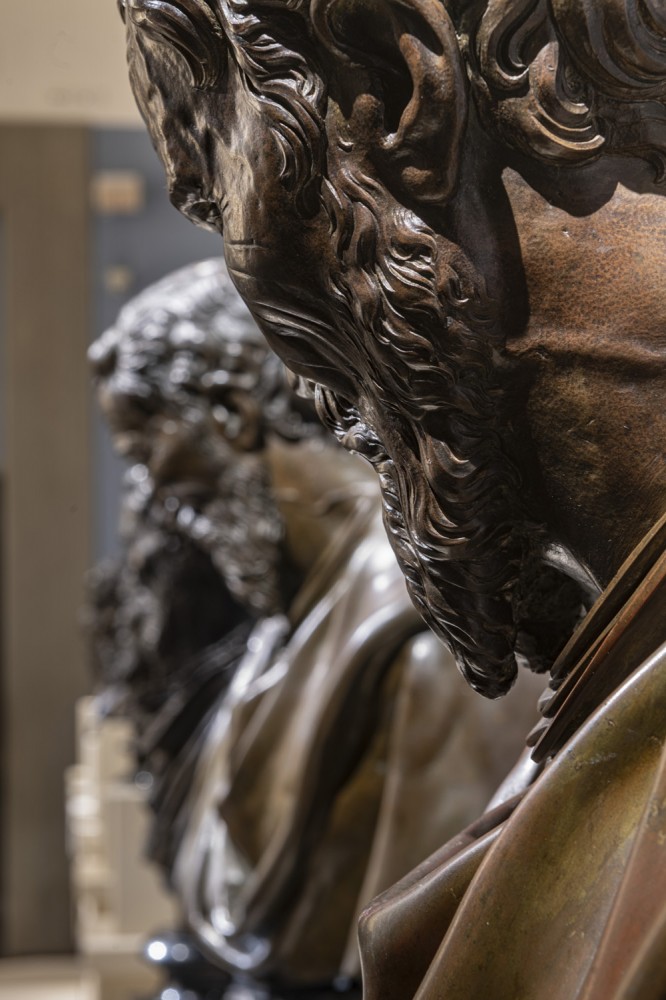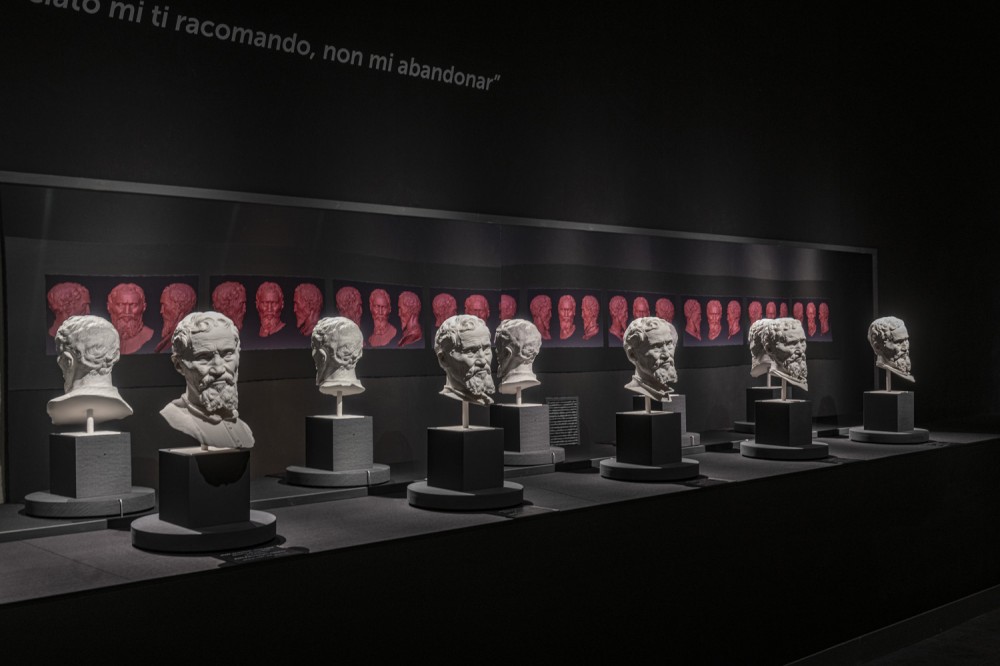
Photo: Guido Cozzi
On Tuesday, February 15, 2022, the Galleria dell'Accademia di Firenze opened to the public the exhibition: Michelangelo: The Bronze Effigy by Daniele da Volterra, curated by Cecilie Hollberg, and made possible with sponsorship from Intesa Sanpaolo - con i musei Gallerie d’Italia, e Intesa Sanpaolo Innovation Center.
For the first time, all nine bronze busts of Michelangelo, attributed to Daniele da Volterra, are on exhibition in the same location. Along with three of the works already housed in Florence at the Galleria dell’Accademia, the National Museum of the Bargello and the Casa Buonarroti, there will be important loans from various international and Italian museums, including the Musée du Louvre and the Musée Jacquemart-André in Paris, the Ashmolean Museum in Oxford, the Capitoline Museums in Rome, the Castello Sforzesco-Civic Collections of Applied Art in Milan and the “Luigi Tonini” City Museum in Rimini.

Photo: Guido Cozzi
Daniele Ricciarelli, known as “da Volterra” (1509 - 1566), was a pupil of Michelangelo and was closely tied to him by such deep friendship that he was present at the death of the master on February 18, 1564 in his house in Rome on Piazza Macel de’ Corvi. Immediately afterwards, Michelangelo’s nephew, Leonardo Buonarroti, commissioned two bronze portraits of his uncle from Daniele. To this task was added a third request for a portrait bust by Michelangelo’s friend and antiquarian, Diomede Leoni. Daniele da Volterra died in 1566 without having finalized the three heads promised to Buonarroti and Leoni, as is clear from the documents drawn up from the day after his death. The problem of the chronology and the fusion of the bronze effigies of Michelangelo has long remained a point to be clarified in the field of art history studies. In fact, there is a good deal of uncertainty about the provenance of the numerous existing examples.
"The idea of this exhibition - states Cecilie Hollberg, Director of the Galleria dell'Accademia di Firenze - stems from the need to make a scientific contribution to the complex relationship between originals and derivations. Michelangelo: The Bronze Effigy by Daniele da Volterra is a unique and unusual exhibition that aims to answer unresolved questions through the use of highly technological and innovative instruments. The starting point of this epochal project on Michelangelo Buonarroti and his pupil Daniele da Volterra was the 2017 reorganization and the restoration of the bronze bust in our Museum. We have consequently taken the opportunity to offer for the first time a direct comparison of the nine busts with Michelangelo Buonarroti’s features, and to review the data, documents and relative bibliography. Almost five centuries later, it is time to find some answers ".
For this exhibition project, all the works were part of an intense campaign of non-invasive analyses, using both classical analytical methods on the materials as well as the most sophisticated and latest-generation instrumentation and innovative methodologies. Never-before carried out scientific investigations on these works were performed, including geological analyses of the fusion clay and nuclear analyses (XRF) to determine the nature and composition of the metal alloys. New approaches have opened up as a result of the fruitful and close collaboration with Mario Micheli - professor of history and restoration technique at Roma Tre University and a well-known expert in the sector who has already worked on the Riace bronzes and the Capitoline wolf - together with a team put together especially for this project.
Each of the heads was digitized and 3D printed on a 1: 1 scale in resin, thanks to the Factum Foundation for Digital Technology in Conservation, a Spanish non-profit organization specializing in the use of new technologies for the conservation of cultural heritage. Each work has been digitally "mapped" in key points and the surrounding areas. The mappings were superimposed and compared in a completely unique way that for the first time combined the digital experience with academic rigor in identifying the original works that were named in the inventory from Daniel da Volterra’s home and the "genealogy" of the variants derived from them. To help the comparison, for both the eyes of the experts and the machine-learning software, the busts were aligned along an imaginary line constructed and laid out by working with the 3D prints.

Photo: Guido Cozzi
The scientific committee for Michelangelo: The Bronze Effigy by Daniele da Volterra is made up of international experts which includes Antonia Boström, Alessandro Cecchi, Mario Micheli, Claudio Parise Presicce and Dimitrios Zikos.
The high scientific value of the initiative is in line with the importance that the Italian MIC-Ministry of Culture gives to scientific research carried out using technologically innovative instrumentation. The initiative will bring together leading experts on Monday 21 February 2022, in a study day organized for this occasion. The main purpose of the exhibition, open until June 19, 2022, is to produce the first scientific catalog of bronze effigies attributed to Daniele da Volterra, which will be released after the study day and will be published by Mandragora. The research carried out so far and the results of the diagnostic investigations will be presented in the publication and will provide an indispensable tool for studies in this field. Among the expected results is that of also constructing an accurate genealogy of the variants derived from the busts of Michelangelo, and as far as possible, to identify the provenance and characteristics of the various versions.

